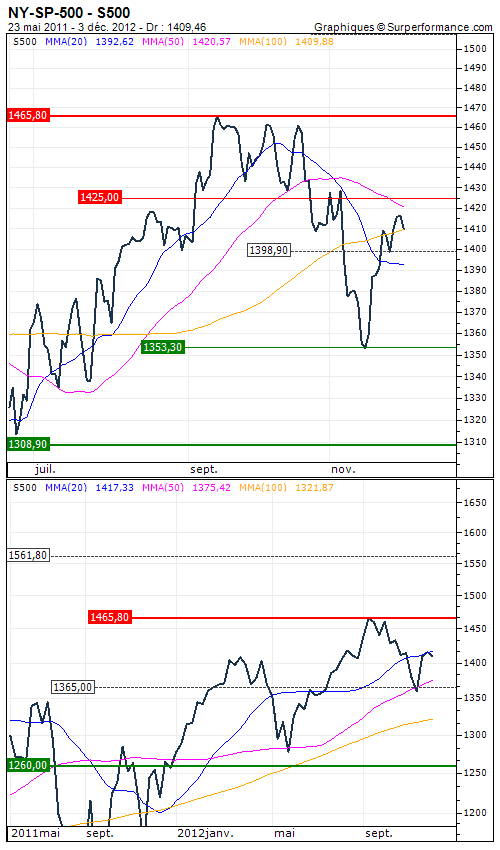S&P 500 : A very uncertain year-end
By Rodolphe Steffan
The New York Stock Exchange had yet opened up driven in particular by a good Chinese indicator and good news in Europe. Chinese manufacturing PMI rose to 50.6 in November, its highest level in seven months, confirming the trend towards recovery of the second world economy. Similarly, the fact that Greece has been making its debt buyback is also a positive element to the continued support of the European Union.
However, the announcement of an unexpected and brutal decline of the U.S. manufacturing sector, indicating a lower activity in the past three years, frightened financial operators. The ISM is indeed stood at 49.5 against 51.7 expected and 51.3 in October, a bad statistic that comes at the wrong time when the market had already to accommodate with budget negotiations.
This climate of uncertainty could lead to further volatility in U.S. indices related to investor nervousness. The S&P 500 has interrupt its technical rebound in contact with its 50-day moving average around 1425 points, threshold constituting a major daily resistance. The most aggressive traders will have to pass bearish on these levels (1410/1430 points) to target a retest of key level of 1365/1370 points and take advantage of current volatility. This strategy will be implemented through the E-mini S&P 500 FUTURE (code: ESXXXX) on the futures market CME E-mini.


 S&P 500
S&P 500 








